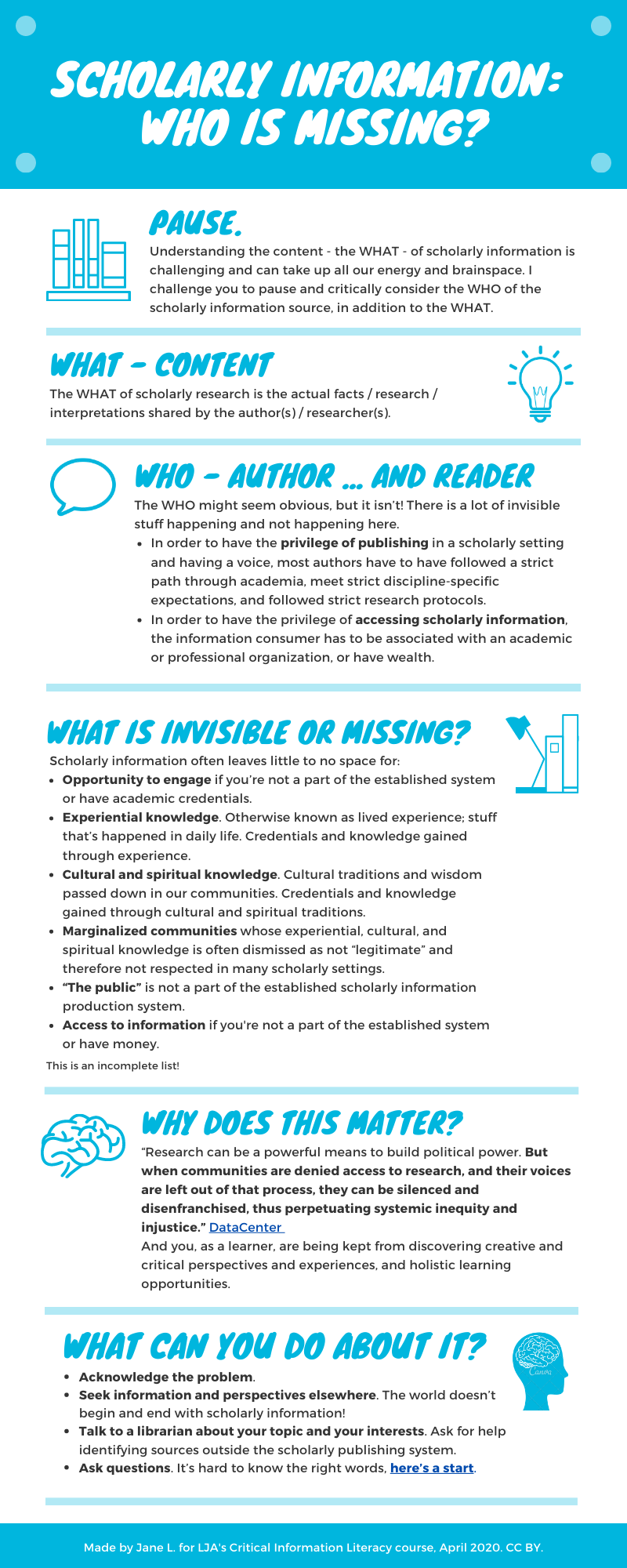6.5.2: Scholarly publishing - an imperfect system
- Page ID
- 186003
The process of creating and sharing scholarly and peer-reviewed work is intense, but it isn't without its flaws.
Mistakes are made
Peer-reviewed articles are not infallible. Mistakes are made, and misinformation is shared, even with all of that peer review and triple-checking and credibility of publishers. Check out this New York Times article about hoax peer-reviewed articles that got published. Remember, peer-reviewed journals are imperfect, and critical thinking on your part is always needed when evaluating information!
Hoaxers Slip Breastaurants and Dog-Park Sex Into Journals(opens in new window)
Voices are excluded
Have you every thought about:
- Who has a voice in American academia? And whose voices are dismissed?
- What knowledge is considered valuable enough to share? And what knowledge is dismissed?
- Who has easy access to information? And who is barred from accessing information?
Below is an infographic introducing the idea that the structure currently in place for producing and accessing scholarly information is exclusive to a fault. The existing structure is built to exclude certain voices and ideas that do not meet a very specific, strict set of expectations and protocols. What are you thoughts on this perspective? Where do you think you fit into this scholarly information structure? And where are you excluded?

Check out the Datacenter(opens in new window) for more information. And don't forget to ask questions - here's a start(opens in new window)!

